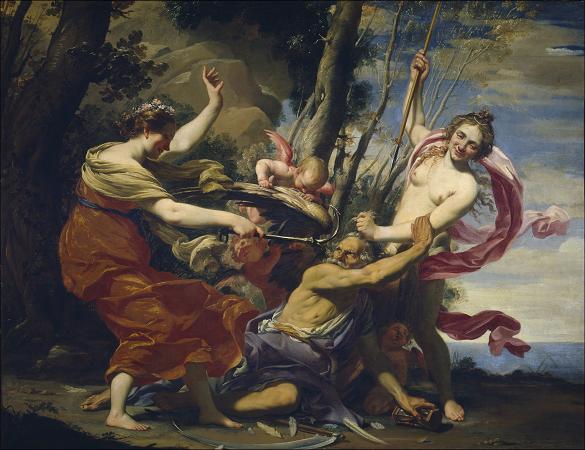France Artist. French art incorporates many styles and and themes. From the 10th to the 13th century French Romanesque Art was dominated by religious themes. From the 12th to the 15th century, Gothic art marked a shift towards greater naturalism and light. Inspired by Italy in the 15th and 16th centurys, French artists embraced Renaissance ideals of humanism and perspective. The French Baroque in the 17th century was grand and theatrical. Artists like Nicolas Poussin and Claude Lorrain created dramatic historical and mythological paintings, often set in grand landscapes. The 18th century onwards saw a rich tapestry of styles emerge in France, including Rococo, Neoclassicism, Romanticism, Realism, Impressionism, Post-Impressionism and a vast array of styles like Cubism, Surrealism, and Abstraction. From the ornate decoration of medieval Gothic cathedrals to the audacious experiments of modern and contemporary art, French art has been molded by a diverse range of cultural, social, and political influences, and it has subsequently left an indelible impact on the art of other regions around the globe. One of the earliest and most significant influences on French art was the Roman Empire, which brought new artistic techniques and styles to the area. Following the fall of the Roman Empire, French art was heavily influenced by Celtic and Christian traditions, as well as by the artistic movements of neighboring countries such as Italy and the Netherlands. In the 17th and 18th centuries, French art entered its Baroque and Rococo periods, characterized by their intricate decoration, dramatic lighting, and sensuous forms. Artists such as Nicolas Poussin and Claude Lorrain produced landscapes and history paintings that reflected the classical ideals of the time, while Rococo artists such as Jean-Honore Fragonard and Antoine Watteau created elegant and playful works that celebrated the pleasures of courtly life. In the 19th century, French art underwent a significant transformation due to the social and political upheavals of the French Revolution and the Industrial Revolution. Artists such as Jacques-Louis David and Eugene Delacroix produced works that reflected the revolutionary spirit of the era, while the Impressionist movement, led by artists such as Claude Monet and Pierre-Auguste Renoir, challenged traditional notions of art and sparked controversy with their groundbreaking use of color and light. In the 20th century, French art continued to evolve and diversify, reflecting the country's rich cultural heritage and its engagement with global artistic trends. Artists such as Pablo Picasso and Henri Matisse produced works that challenged traditional notions of form and representation, while the Surrealist movement, led by figures such as Andre Breton and Salvador Dali, explored the irrational and dreamlike aspects of the human psyche. French art has left an enduring legacy on the art of other regions around the world.
more...














